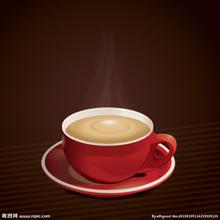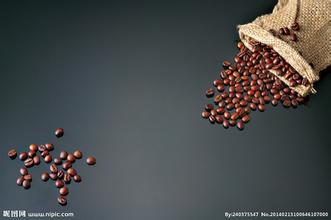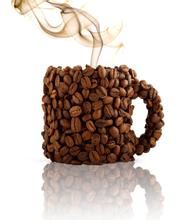The caffeine content of Yega Sheffield introduces the flavor characteristics of G 1 coffee beans.
"at present, commercial low-caffeine coffee uses dichloromethane solvent or activated carbon and water to extract caffeine from raw beans, but the aroma and oil of coffee will be lost with caffeine. Unfortunately, harmful chemical solvents remain in coffee, so artificial decaf is neither delicious nor healthy. & # 39Mutual-Han Huaizong's "Fine Coffee Science"
According to European and American standards, the general standard of low-caffeine coffee is that the caffeine content is less than 0.03%, but this artificial low-caffeine coffee treated with chemical solvents is neither delicious nor healthy. Therefore, when people are more and more inclined to consume natural low-grade coffee varieties and brew Yega Chuefei, I personally prefer medium-light or moderate roasting degree, slightly thicker than ordinary hand-brewing, and slightly higher water temperature (such as 92 ℃) to brew first quickly and then slowly. (the utensils used are No.1 Halio V60, Merita hand brewing pot, which I am used to) because Yega Ben is a flower-scented and fruit-sour bean. The medium and shallow baking degree is more conducive to showing its floral aroma and sour flavor. The use of coarser grinding and higher water temperature, first fast and then slow brewing method, is because after the coffee bean is ground into powder, its aromatic substances give off very quickly, and in brewing, good aromatic substances will appear first, so the use of coarser grinding and higher water temperature, first fast and then slow brewing way, are all in order to better show its floral and fruity acid flavor, so that it tends to the taste of berries without losing the sweetness of honey And avoid the appearance of bad substances in the latter section, so as not to lose the cleanliness it should have. Ethiopia's climate is located in the tropics because of the large latitude span and altitude difference, but the temperature is uneven in various places, ranging from 9.7 ℃ to 25.5 ℃, with an annual average temperature of 16 ℃. High altitude requires high altitude planting for high quality Arabica, which provides superior growth conditions at high altitude. The temperature difference range of 9.7 ℃ ~ 25.5 ℃ also provides a good growth temperature guarantee for high quality coffee beans with a growth temperature of 14 ℃ ~ 24 ℃. Every year, the heavy rainy season from June to September and the light rainy season from February to May ensure a sufficient supply of Rain Water. Therefore, with such high-quality geographical and climatic conditions, there is no doubt that the town of Yejasuefi is about 1700 meters to 2100 meters above sea level, and the mountain villages here are foggy, like spring all the year round, and cool breezes are slow in summer. it is not cold in winter, so it brings high-quality growing conditions for high-quality coffee. This is why Yejia Xuefei coffee beans, despite their petite size, give birth to a unique regional flavor of citrus and flowers, which tastes sweet and sour, and with the development of planting technology and the increasing maturity of processing methods. Yejasuefei now mainly has two kinds of beans, which are washed in water and in the sun. The picture above shows the washed Yega Xuefei. We can see that his color is turquoise, and it is very clean. So the taste of the washed Yega is clean and bright, with the sweetness of honey, and the flower and fruit flavor is more lively.

Important Notice :
前街咖啡 FrontStreet Coffee has moved to new addredd:
FrontStreet Coffee Address: 315,Donghua East Road,GuangZhou
Tel:020 38364473
- Prev

Introduction to the quality of the method of describing the taste and flavor of coffee beans in Uganda
The Republic of Dominica (Dominican Republic) is adjacent to Haiti, and both own the island of Hispaniola (Hispaniola). Like its neighbours, the Dominican Republic had a history of revolution and poverty, but now it has democratic elections and the country is relatively stable. In the early 18th century, coffee was grown in the Dominican Republic, the best production.
- Next

Sumatran coffee bean elevation allusion meaning story price flavor description introduction
Sumatra Island, formerly known as Jindao and Jinzhou, is famous for its rich gold deposits. The topography of Sumatra is long and narrow. The topography of Sumatra is mainly from northwest to southeast of the island's Bali Mountains Barisan Mountains and the eastern lowlands. The mountains stretch, with more than 90 volcanoes and many volcanic lakes, volcanoes provide fertile soil suitable for coffee growth. For tropical rain forest climate
Related
- Detailed explanation of Jadeite planting Land in Panamanian Jadeite Manor introduction to the grading system of Jadeite competitive bidding, Red bid, Green bid and Rose Summer
- Story of Coffee planting in Brenka region of Costa Rica Stonehenge Manor anaerobic heavy honey treatment of flavor mouth
- What's on the barrel of Blue Mountain Coffee beans?
- Can American coffee also pull flowers? How to use hot American style to pull out a good-looking pattern?
- Can you make a cold extract with coffee beans? What is the right proportion for cold-extracted coffee formula?
- Indonesian PWN Gold Mandrine Coffee Origin Features Flavor How to Chong? Mandolin coffee is American.
- A brief introduction to the flavor characteristics of Brazilian yellow bourbon coffee beans
- What is the effect of different water quality on the flavor of cold-extracted coffee? What kind of water is best for brewing coffee?
- Why do you think of Rose Summer whenever you mention Panamanian coffee?
- Introduction to the characteristics of authentic blue mountain coffee bean producing areas? What is the CIB Coffee Authority in Jamaica?

